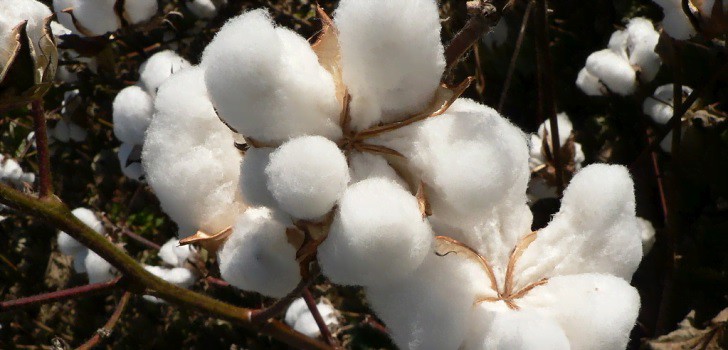Cotton subsidies up 33% despite price escalation
A 76.4% of the global subsidies for crops were concentrated in China, a country which destined 4.3 billion dollars (3.78 billion euros) to help its cotton manufacturers.

Subsidies of cotton rally. The government’s aid for this natural fibre’s cultivation has gone upwards even though prices raised during the 2017-2018 campaign. Subsidies reached 5.91 billion dollars (5.2 billion euros), which represent an increase of 33% in base to the 4.4 billion dollars (3.87 billion euros) registered during the former campaign.
Paradoxically, the injection has taken place within a context in which cotton prices have gone up. The fibre’s prices grew a 6% during the last campaign, going from 83 US cents to 88 cents per pound.
In that sense, the trend that started to be noticed two years ago has been broken. The tendency consisted on the fact that, if subsidies increased when price was low, the moment it grew, the aid provided by the government to manufacturers would reduce.
Government subsidies were concentrated in ten countries, with the purpose of helping farmers pay the corresponding bills to raw materials, as well as alleviating the several expenses derived from product manufacture and commercialisation, according to the report by the International Cotton Advisory Committee (ICAC).
China is the country that destined the most public resources to cotton. In fact, from the total of 5.91 billion dollars of the subsidies registered on a global scale, about 76.4% was exclusively resorted to the Asiatic leviathan.
The government of China supports cotton production by means of controlling the volumes of fibre purchased abroad, as well as by imposing an effective tariff of about 40% on cotton imported outside the quota system. The country also hands out direct subsidies to cotton manufacturers, which it decides on according to the difference between the indicative price established for the season and the average market price.
An amount of 15% of global subsidies for cotton crops is registered in the United States
The total amount of subsidies that the Chinese government handed out during the 2017-2018 campaign was valued in 4.3 billion dollars (3.78 billion euros), the equivalent to 33 cents per pound, a superior amount to the 3.3 billion dollars (2.9 billion euros) delivered the year before.
On the other hand, 15% of global investment to cotton crops was provided by the United States, whose aids for the segment ascended to 890 million dollars (784.3 million euros), which stands at about nine cents per pound, compared to the 469 million dollars (413.3 million euros) from the previous campaign.
Turkey is the third country that helped the most its cotton manufacturers, standing their subsidies at 398 million dollars (350.7 million euros), whilst Greece occupies the fourth position with 225 million dollars (198.2 million euros). Spain’s support to its cotton producers ascended to an amount of 73 million dollars (64.3 million euros).
Cotton subsidies in Spain reached the figure of 73 million dollars (64.3 million euros) during the 2017-2018 campaign
In other cotton producing regions, like the countries from Western Africa, there were also subsidies but in a lesser measure. In these cases, aids were mainly destined to the purchase of fertilisers and seeds for crops.
In 2017-2018, Mali provided its farmers with an estimated amount of 35 million dollars (30.8 million euros), whereas Burkina Faso gave 30 million dollars (26.4 million euros). Côte d’Ivoire assigned its farmers with an aid valued in 15 million dollars (13.2 million euros), and Senegal destined a million dollars (881,274 euros) to promote planting fields of cotton.
In some countries like Brazil, Pakistan or India, minimum price support programs were not activated during 2017-2018 as market prices surpassed the levels of intervention prices established by their governments.


info@themds.com
Validation policy for comments:
MDS does not perform prior verification for the publication of comments. However, to prevent anonymous comments from affecting the rights of third parties without the ability to reply, all comments require a valid email address, which won’t be visible or shared.
Enter your name and email address to be able to comment on this news: once you click on the link you will find within your verification email, your comment will be published.